Amazon Redshift vs Vertica
May 26, 2023 | Author: Michael Stromann
12
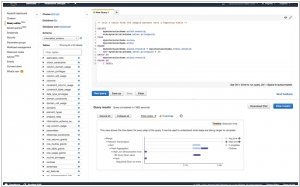
Amazon Redshift is a fast, fully managed, petabyte-scale data warehouse service that makes it simple and cost-effective to efficiently analyze all your data using your existing business intelligence tools. You can start small for just $0.25 per hour with no commitments or upfront costs and scale to a petabyte or more for $1,000 per terabyte per year, less than a tenth of most other data warehousing solutions.
7
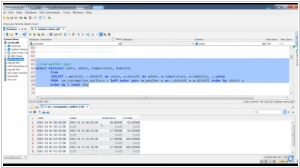
Vertica offers organizations new and faster ways to store, explore and serve more data. Vertica lets organizations store data in a cost-effectively, explore it quickly and leverage well-known SQL-based tools to get customer insights. By offering blazingly-fast speed, accuracy and security, it offers operational advantages to the entire organization.
Amazon Redshift and Vertica are both columnar database platforms that are designed for handling large-scale data analytics and reporting.
Amazon Redshift is a fully managed data warehousing solution offered by Amazon Web Services (AWS). It uses a massively parallel processing (MPP) architecture to efficiently store and query large datasets. Redshift offers high scalability, automated backups, and seamless integration with other AWS services, making it a popular choice for organizations looking to build a cloud-based data warehousing solution. It provides excellent performance for complex queries and can handle petabytes of data.
Vertica, on the other hand, is a columnar analytical database designed for high-performance analytics. It excels at delivering fast query response times, even on large datasets, due to its columnar storage format and advanced query optimization techniques. Vertica offers features such as compression, projection, and workload management, enabling organizations to achieve efficient data storage and processing. It is often used for real-time analytics, ad-hoc querying, and interactive data exploration.
See also: Top 10 Big Data platforms
Amazon Redshift is a fully managed data warehousing solution offered by Amazon Web Services (AWS). It uses a massively parallel processing (MPP) architecture to efficiently store and query large datasets. Redshift offers high scalability, automated backups, and seamless integration with other AWS services, making it a popular choice for organizations looking to build a cloud-based data warehousing solution. It provides excellent performance for complex queries and can handle petabytes of data.
Vertica, on the other hand, is a columnar analytical database designed for high-performance analytics. It excels at delivering fast query response times, even on large datasets, due to its columnar storage format and advanced query optimization techniques. Vertica offers features such as compression, projection, and workload management, enabling organizations to achieve efficient data storage and processing. It is often used for real-time analytics, ad-hoc querying, and interactive data exploration.
See also: Top 10 Big Data platforms
Amazon Redshift vs Vertica in our news:
2016. HP to sell its software business to Micro Focus
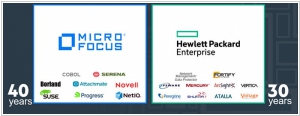
Hewlett-Packard Enterprise (HPE) has reached an agreement to sell its software business to Micro Focus in a substantial $8.8 billion deal. One significant component of HP Enterprise software, Autonomy, constitutes a quarter of the total value and was initially acquired by HP for $11 billion in 2011. The software business being sold also encompasses Mercury Interactive, which HP acquired for $4.5 billion in 2006, Vertica for $320 million, and ArcSight for $1.5 billion in 2010. HPE's Chief Executive, Meg Whitman, intends to shift the company's focus towards other sectors such as networking, storage, and technology services following its separation from computer and printer manufacturer HP Inc. in the previous year.
2014. HP plugs the Vertica analytics platform into Hadoop
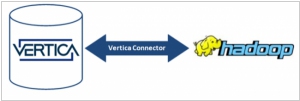
HP has unveiled the introduction of Vertica for SQL on Hadoop, a significant announcement in the world of analytics. With Vertica, customers gain the ability to access and analyze data stored in any of the three primary Hadoop distributions: Hortonworks, MapR, and Cloudera, as well as any combination thereof. Given the uncertainty surrounding the dominance of a particular Hadoop flavor, many large companies opt to utilize all three. HP stands out as one of the pioneering vendors by asserting that "any flavor of Hadoop will do," a sentiment further reinforced by its $50 million investment in Hortonworks, which currently represents the favored Hadoop flavor within HAVEn, HP's analytics stack. HP's announcement not only emphasizes the platform's interoperability but also highlights its capabilities in dealing with data stored in diverse environments such as data lakes or enterprise data hubs. With HP Vertica, organizations gain a seamless solution for exploring and harnessing the value of data stored in the Hadoop Distributed File System (HDFS). The combination of Vertica's power, speed, and scalability with Hadoop's prowess in handling extensive data sets serves as an enticing proposition, potentially motivating hesitant managers to embrace big data initiatives confidently. HP's comprehensive offering provides a compelling avenue for organizations to unlock the potential of their data, urging them to venture beyond their reservations and embrace the world of big data.
2014. HP Vertica introduces SQL-on-Hadoop
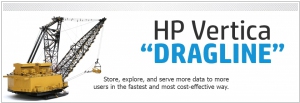
HP's Big Data platform, Vertica, has recently undergone an update to its new version, 7.1, codenamed "Dragline." This release brings forth several enhancements including SQL-on-Hadoop capability, improved access control, optimized backups, expanded support for Flex Zone data formats, dynamic resource management, and more. The standout feature in this version is the ability to execute SQL queries directly on Hadoop Distributed File System (HDFS) without the need for connectors. However, for faster and in-depth analytics, the data would still need to be moved into Vertica. It is worth noting that, as mentioned in a previous post about SQL-on-Hadoop, MapR and Vertica can be operated on the same hardware, leading to cost savings and improved integration between the two platforms.


